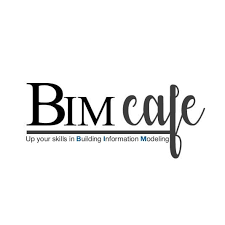In the ever-evolving landscape of architecture, engineering, and construction, Building Information Modeling (BIM) has established itself as an indispensable tool. With its ability to streamline project workflows and enhance the efficiency of the building process, BIM is revolutionizing the industry. For professionals and students alike, understanding BIM and mastering its software is crucial. In this comprehensive guide, we will explore the ins and outs of BIM software courses, particularly focusing on tools like Autodesk Revit, and their application in real-world projects.
Introduction to BIM Software Tools
BIM software tools are far more than traditional CAD programs; they represent the integration of design, analysis, and construction management. An overview of BIM software tools reveals a plethora of functionalities, including 3D modeling, simulation, and documentation, all in a collaborative environment. These tools are designed to represent buildings digitally, facilitating better decision-making and efficiency throughout the building’s lifecycle.
The Role of Autodesk Revit in BIM
Autodesk Revit stands out as a premier tool in the BIM software arsenal. Recognized for its comprehensive capabilities in architectural design, MEP engineering, and construction, Autodesk Revit is indispensable for modern construction projects. Training in Autodesk Revit equips professionals with the skills to create detailed, coordinated, and consistent model-based designs. The software’s ability to handle various aspects of building design and documentation in a singular model is what sets it apart.
Practical Applications of BIM Software in Projects
The true potential of BIM is realized in its practical applications in real-world projects. Understanding the application of BIM software in projects is crucial. BIM facilitates enhanced collaboration among architects, engineers, and contractors, leading to more efficient project delivery. It aids in detecting clashes, managing changes, and maintaining documentation, thereby reducing errors and saving costs.
Educational Journey into BIM Software Courses
Embarking on a BIM software course involves diving into both the theoretical and practical aspects of the software. It’s important for learners to grasp the fundamental principles of BIM, including its workflow and process management capabilities. Additionally, practical training, especially in software like Autodesk Revit, provides hands-on experience essential for mastering BIM.
Balancing Theoretical Knowledge with Practical Skills
One of the significant challenges in BIM education is balancing theoretical knowledge with practical application. While understanding BIM’s theoretical foundations is crucial, the application of this knowledge in real-world scenarios through tools like Autodesk Revit is what truly embeds the skills. Courses that offer a mix of classroom learning and hands-on projects provide the most holistic educational experience.
Case Studies: Bringing Learning to Life
Case studies are an integral part of BIM education. They offer insight into how BIM is applied in actual projects, showcasing both successes and challenges. By analyzing case studies, students and professionals can understand the practical implications of BIM software in various project phases, from conception to completion.
The Evolution of BIM Software Training
The landscape of BIM software training is continually evolving. With advancements in technology, new dimensions such as virtual reality (VR) and artificial intelligence (AI) are beginning to integrate with BIM, offering even more immersive and efficient ways to design, visualize, and manage building information. Future training courses will likely incorporate these advancements, providing a more enriched learning experience.
Continuous Learning in the BIM Space
In the fast-paced world of BIM technology, continuous learning is essential. As software tools evolve with new features and capabilities, staying updated is crucial for professionals to remain relevant in the industry. Ongoing training and professional development in the latest BIM tools and practices are indispensable for career growth.
The Importance of Certification in BIM Software Proficiency
Certification in BIM software, especially in tools like Autodesk Revit, can significantly enhance a professional’s credibility. These certifications are often regarded as a testament to one’s skill level and dedication to the field, making them highly valued in the industry.
Challenges and Opportunities in BIM Education
While BIM software courses offer vast opportunities for professional growth, they also come with challenges. Keeping pace with rapidly changing technology, adapting to new teaching methodologies, and ensuring the practical applicability of skills are some of the hurdles educators and learners face. However, these challenges also present opportunities for innovation in teaching and learning methods.
The Future of BIM Education
The future of BIM education looks promising and is poised for greater integration with upcoming technologies. As BIM continues to become an industry standard, its education will likely expand, offering more specialized and advanced courses. This progression will prepare a new generation of professionals equipped to handle the complexities of modern architectural and construction projects.
Conclusion
In conclusion, delving into BIM software courses is an enlightening journey into the world of modern construction and design. For professionals in architecture, engineering, and construction, these skills are not just an asset but a necessity in today’s digitalized world. As BIM continues to shape the future of the building industry, proficiency in BIM software tools like Autodesk Revit becomes increasingly crucial. With continuous learning and adaptation, professionals can stay ahead in this dynamic field, contributing to smarter, more efficient, and sustainable building practices.


